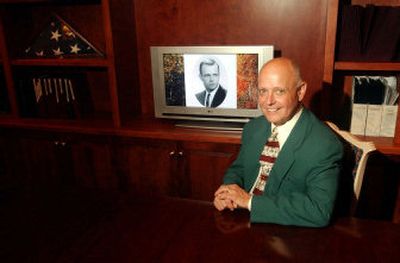Going high-tech

AVON, Conn. – When Leslie Gosselin’s sister died last month in Connecticut, she knew she wouldn’t be able to make the trip from Florida for the funeral. Gosselin was undergoing chemotherapy and could not leave the state.
But John Carmon, director of the Carmon Community Funeral Home in Avon, told Gosselin he could record the service on a DVD and ship it to her.
“I didn’t even know they could do anything like that until he told me about it,” Gosselin said. “I didn’t have to cry in public. It was nice. I could cry in the privacy of my own home.”
Gosselin, like many people, was unaware of a quiet change getting under way: The funeral business is going high-tech.
Carmon, president of the National Funeral Directors Association between 2000 and 2001, has opened a new funeral home in Avon that includes several examples of how the latest advances in technology are being applied to the funeral business.
The funeral home has a camera that can broadcast funerals on the Internet, or record them on DVDs, and a flat-screen, high-definition television monitor for airing memorial videos. The home can even print digital pictures on urns and caskets.
Beyond the traditional funeral home, outside Web contractors, such as Funeral-cast and Memorialcast, can be hired to attend a funeral and broadcast it online.
Bob Vandenbergh, president of the National Funeral Directors’ Association from 2001 to 2002, concedes that change has typically been slower in the funeral business. “Funeral service has always been rooted in tradition, and because of that, technology and the use of computers … really hasn’t been widely used.”
But Jacquelyn Taylor, executive director of the New England Institute of Funeral Service in Newton, Mass., said the demand for Web casting and other new technologies may now be on the rise.
“I just think it’s a very timely development with families so mobile and scattered around the country.” Being so spread out makes it more difficult for families to attend funerals, she said. “Sometimes it’s just logistically impossible, if not financially.”
At the Carmon home in Avon, which opened in early June, a camera sits inconspicuously 6 feet overhead on the back wall of a family center – a spacious room that’s easily converted for various kinds of services. The camera gives those unable to attend a funeral the chance to watch the service online or on DVD.
At the other end of the family center a lectern stands in front of a floor-to-ceiling curtain that covers a wall-mounted, 50-inch, flat-screen, high-definition television. In a downstairs showroom, there are urns and caskets on which digital pictures can be printed.
One of the most popular uses of technology is the video tribute – a compilation of photos, and potentially video, of the deceased on DVD, with music and captions added. Some families produce the tributes themselves; there are also companies that offer the service. At Carmon’s funeral home, the staff can produce the videos.
When Carmon decided to install the Web camera, he thought it would be useful for members of the armed forces serving overseas and unable to return home for funerals of friends and family members. Helping someone such as Gosselin was an unexpected advantage, Carmon said.
“All of a sudden, ‘Wow,’ we’re able to provide being part of the experience,” he said.
Carmon is quick to point out that Web casting and other forms of technology will not replace traditional funeral services but are an option.
“We’re stepping into this transition era,” he said. “(We’re) not using technology to be less personal, but in some ways more so.”
The technology is aimed at people who otherwise might not be able to attend a funeral, not as a means of replacing important traditions such as visiting grieving friends and family members.
“Is it as good as a hug? Is it the same as even talking to someone on the telephone? You know, I don’t think so,” Carmon said.
For Gosselin, the technology filled a need. If not for the DVD of her sister’s funeral, she would have missed the service completely.
“It was perfect,” she said.
Gosselin has taken advantage of the DVD, having watched it many times since her sister’s death.
“Even now, if I want to see her, I can turn on that DVD,” she says. “I like to watch it when nobody’s in the house because it’s between just my sister and myself.”